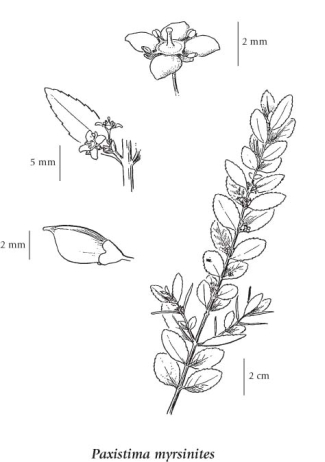Paxistima myrsinites (Pursh) Raf.
falsebox (Description; Oregon boxleaf)
Celastraceae (Bittersweet family)
Introduction to Vascular Plants
falsebox (Description; Oregon boxleaf)
Celastraceae (Bittersweet family)
Introduction to Vascular Plants
